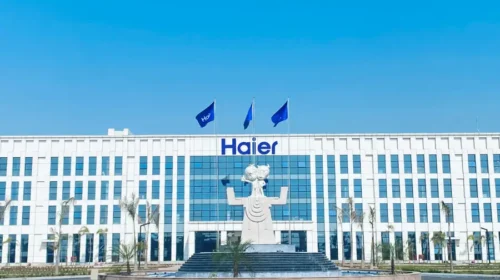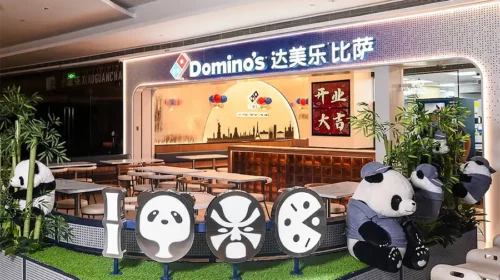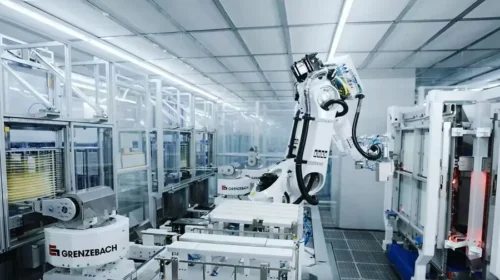Yum China serves up profit, margin growth despite challenging consumer landscape

The operator of KFC and Pizza Hut restaurants in China reported revenue and profit growth in the second quarter, even as sales contracted at many of its rivals
Key Takeaways:
- Yum China’s revenue rose 4% in the second quarter on a constant currency basis, while its core operating profit rose 12%
- The company is raising its profits and margins by leveraging AI in its customer-facing and back-office operations and taking other efficiency-boosting measures
By Doug Young
In economically uncertain times with increasingly cautious consumers, Yum China Holdings Inc. (YUMC.US; 9987.HK) defied the broader market in the second quarter, getting creative with new store formats and deploying AI in its customer-facing and back-office operations to boost both its profits and margins.
The operator of KFC and Pizza Hut restaurants in China turned in solid profit growth and margin expansion in its latest quarterly report released on Tuesday, even as many of its peers stumbled amid economic headwinds. The company also continued its breakneck expansion in the massive market during the quarter. Yum China wasn’t completely immune from the headwinds affecting the market, reporting a small decline in same-store sales.
But even that looked like a relative achievement when compared with Starbucks (SBUX.US), which last week reported its China same-store sales tumbled 14% in the three months through June.
Despite the current challenging macro environment, Yum China was able to post a 4% year-on-year revenue gain on a constant currency basis to $2.68 billion – a record for the quarter and faster than China’s restaurant sector’s average sales growth rate of 2% for the quarter, based on data from China’s National Bureau of Statistics. Some of that owed to the company’s ongoing aggressive expansion, which saw it open a net 401 new stores during the period, bringing its total to 15,423 and on track to reach its target of opening 1,500 to 1,700 new stores this year.
Notably, about a quarter of the new openings were by franchisees, as Yum China turns to such partners to extend its footprint in harder-to-reach places like university campuses and gas stations. New stores maintained good returns, with around 80% operating profitably within three months.
During the quarter, Yum China also rapidly built up more new product offerings with wider price ranges to capture a bigger share of the market.
Playing on that value-for-money theme, Yum China launched a new Pizza Hut concept store called “Pizza Hut WOW” in May, catering to more value-conscious consumers. It also detailed aggressive expansion plans for both its recently launched KCOFFEE stores that operate side-by-side with existing KFCs, as well as the new Pizza Hut WOW outlets, which we’ll discuss in more detail shortly. Those and other value-oriented initiatives helped to drive a double-digit year-on-year gain in the company’s same-store transaction volume during the quarter.
“We are navigating a complex and dynamic environment, yes, but we see the many challenges more as opportunities,” Yum China CEO Joey Wat said on the company’s quarterly earnings call, pointing to three areas where it is focusing to improve its performance. In addition to the KCOFFEE and Pizza Hut WOW initiatives, Wat pointed to the wide range of steps Yum China is taking to improve its operational efficiencies, and to broaden its addressable market by widening its price ranges and expanding product offerings.
The company said that its various initiatives to deploy AI tools into its operations has helped to drive efficiency and help the company navigate market changes.
Pizza Hut, for example, showed higher operational efficiency with the roll out of AI- and automation-enabled “iKitchens” to enhance food quality and automate back-office tasks like sales forecasting, labor scheduling and inventory management. That allowed the chain to boost its restaurant margin to 13.2% during the quarter. The strong Pizza Hut performance helped to lift Yum China’s overall operating margin to 9.9% for the quarter from 9.7% a year earlier. Yum China had its most profitable second quarter since its spinoff from former parent Yum Brands (YUM.US) in 2016.
Yum China shares rose more than 10% in Hong Kong the day of the report’s release and continued to post smaller gains over the next two trading days. The stock is currently down about 25% this year and trades at a discount to its international peers, reflecting broader investor concerns about the Chinese economy.
The company’s latest price-to-earnings (P/E) ratio stands at approximately 16, lower than 24 for global giant McDonald’s (MCD.US) but above 14 for domestic peer, hotpot giant Haidilao (6862.HK). This suggests that China restaurant stocks are relatively undervalued compared to their global peers.
Yum China and its peers are having to contend with a Chinese economy that’s slowing after three decades of breakneck growth. China’s GDP grew 4.7% in the second quarter and total retail sales nationwide grew by 2% year-on-year in June.
Creative store formats
Experimenting with new store formats has become Yum China’s latest move to drive incremental sales. The company rolled out side-by-side KCOFFEE stores with their own seating and menus adjacent to existing KFCs in last year’s fourth quarter, allowing the coffee shops to be independent while also operating more efficiently by sharing resources like common kitchens. The company added about 200 side-by-side KCOFFEE stores in the second quarter, bringing its total to about 300 in July. It’s aiming to roughly double that by year end, aiming for 500-600 stores.
As it ramped up the new KCOFFEE store model, Yum China said it sold 120 million cups of KCOFFEE in the first half of this year, up 36% year-on-year.
The Pizza Hut WOW initiative is newer, with the first stores using the format launched in May this year, aiming to attract more value-conscious consumers with simpler menus and lower entry prices. Yum China converted over 100 existing Pizza Huts to this new format by the end of July, with a target to double this amount by year-end.
The combination of new initiatives, store openings, cost controls and efficiency-boosting measures helped Yum China to not only boost its operating margin but also to keep increasing its profits. The company’s net income rose 8% to $212 million, while its core operating profit rose 12% to $275 million. Its earnings per share rose by an even higher 17%, reflecting the company’s aggressive share buybacks as part of its broader campaign to return money to shareholders through buybacks and by paying dividends.
The company said it returned $249 million to shareholders through share buybacks and cash dividends in the second quarter, bringing its total spending in that regard to nearly $1 billion in the first half of the year. It added it is on track to return a total of $1.5 billion this year, translating to approximately $500 million in combined dividends and share buybacks planned for the second half of the year.
The company reiterated that it will continue investing in more value-for-money products and take other steps to keep driving transaction growth. It will also continue to streamline operations and improve its supply chain efficiency to enhance its competitiveness and profitability in the long run.
Concurrent with the latest financial report, Yum China also announced that Andy Yeung will step down as CFO at the end of September, while continuing to serve as a senior advisor. Adrian Ding, Yum China’s current chief investment officer and general manager of the company’s Lavazza joint venture, has been appointed as acting CFO effective Oct. 1.
The Bamboo Works offers a wide-ranging mix of coverage on U.S.- and Hong Kong-listed Chinese companies, including some sponsored content. For additional queries, including questions on individual articles, please contact us by clicking here.
To subscribe to Bamboo Works free weekly newsletter, click here






